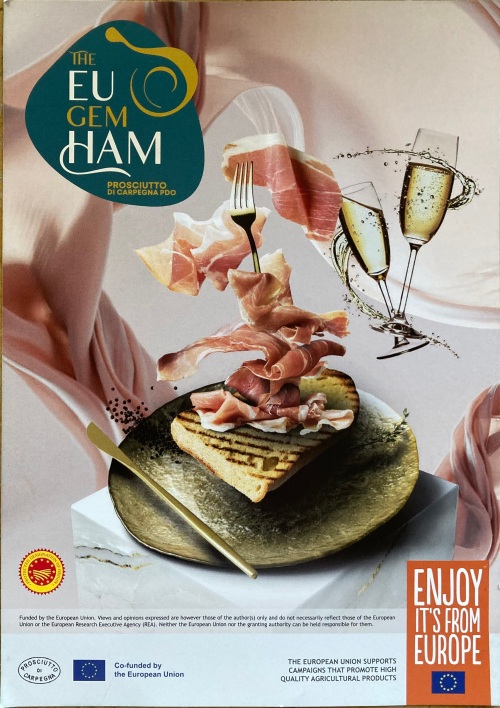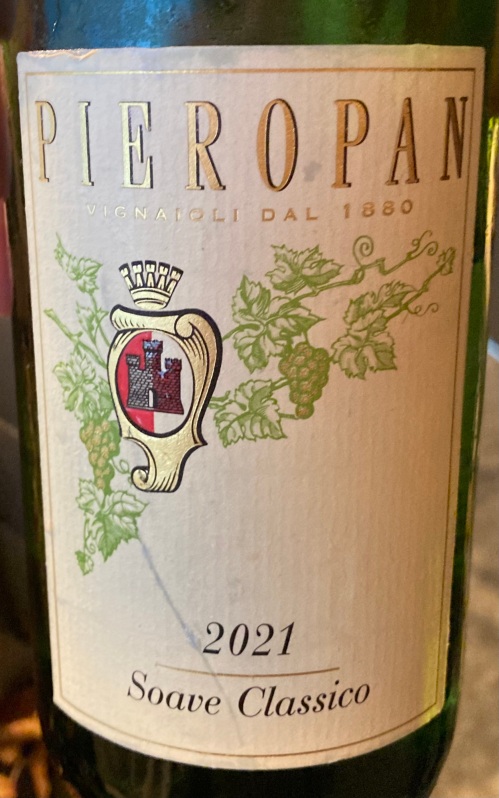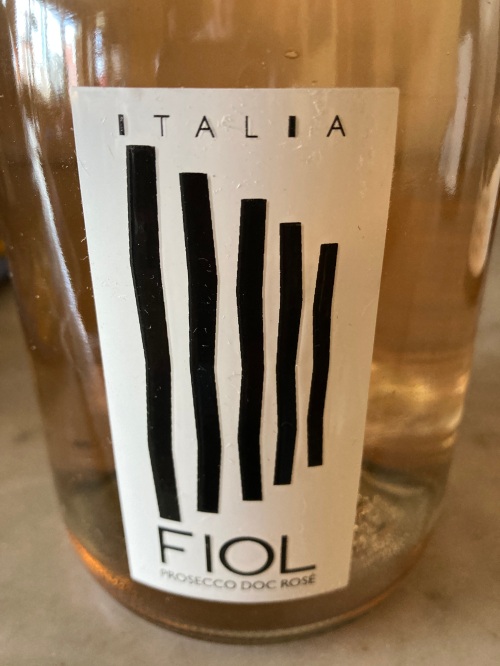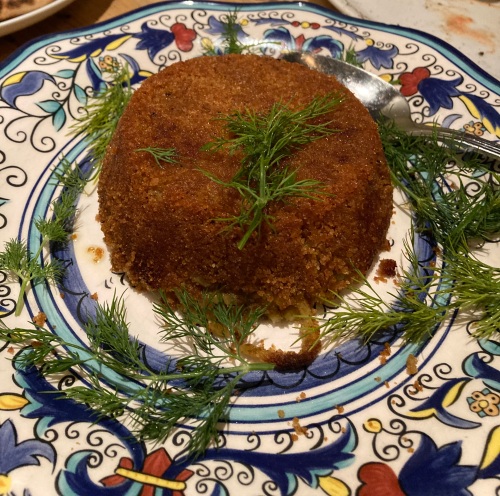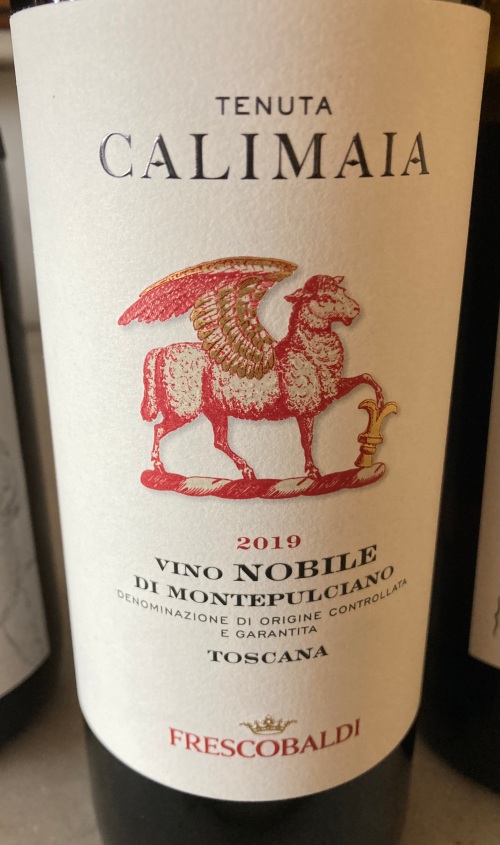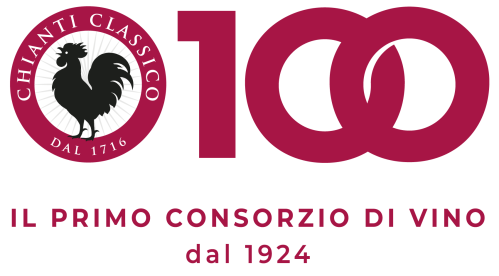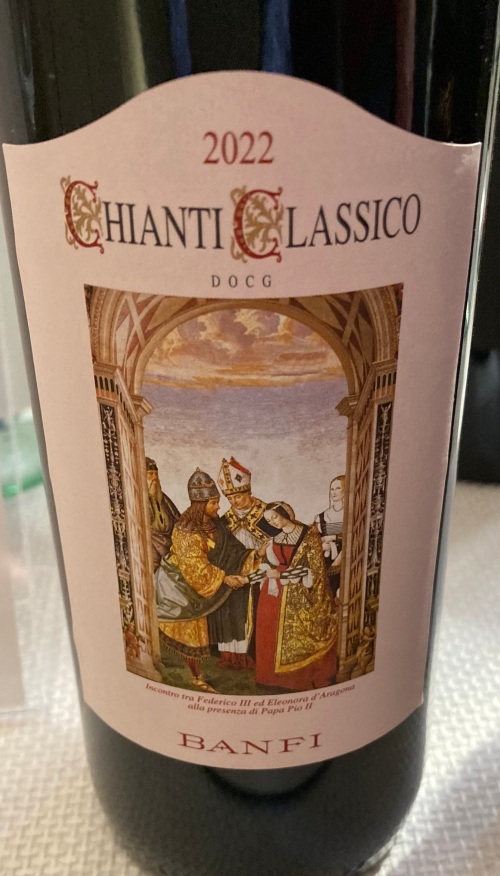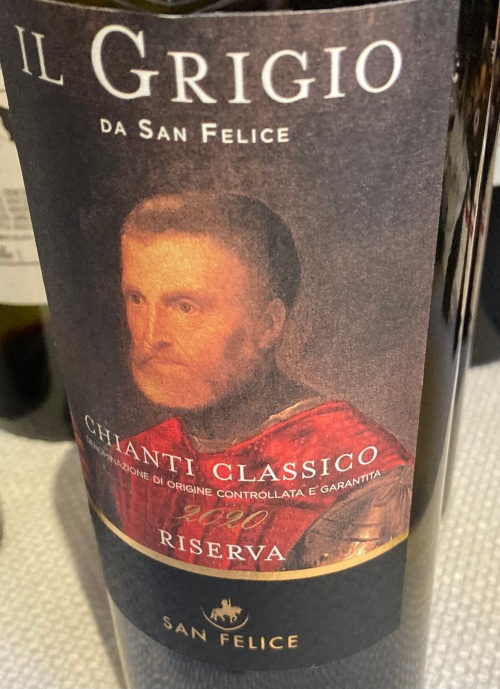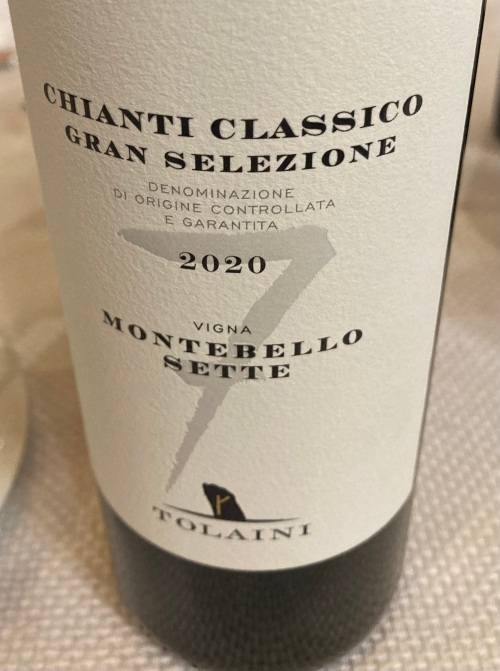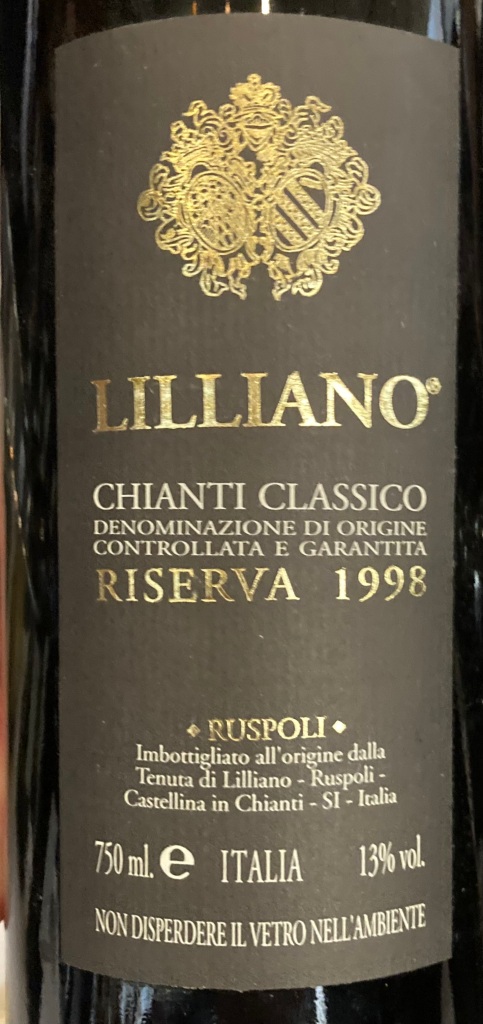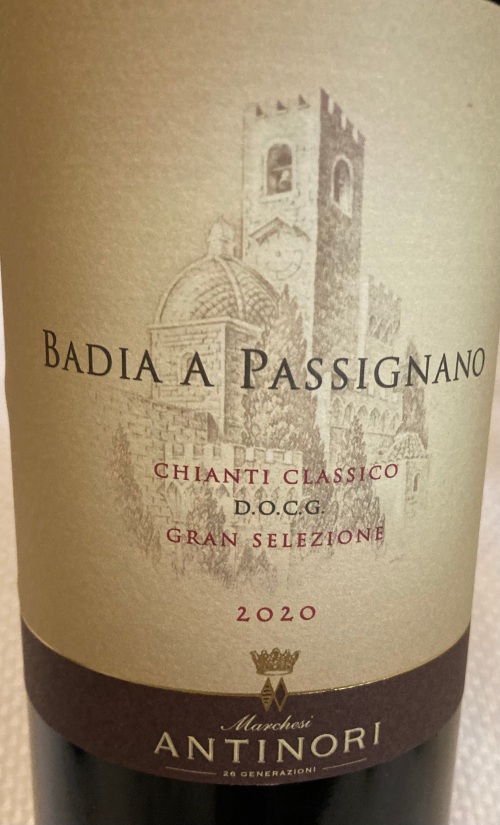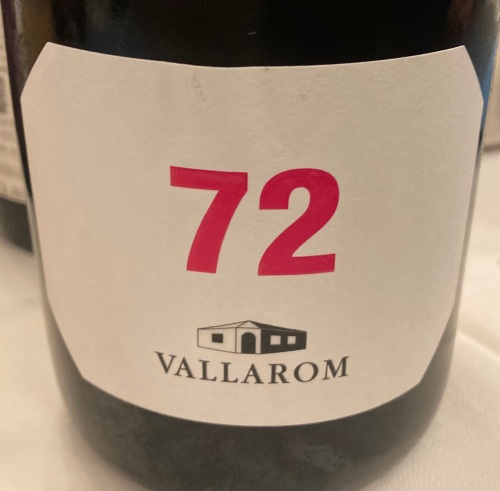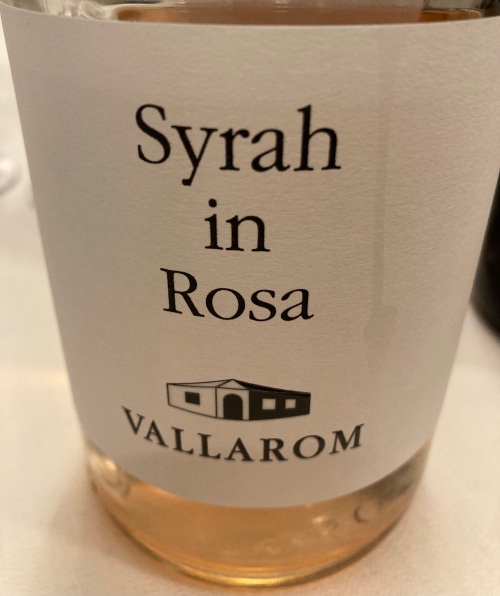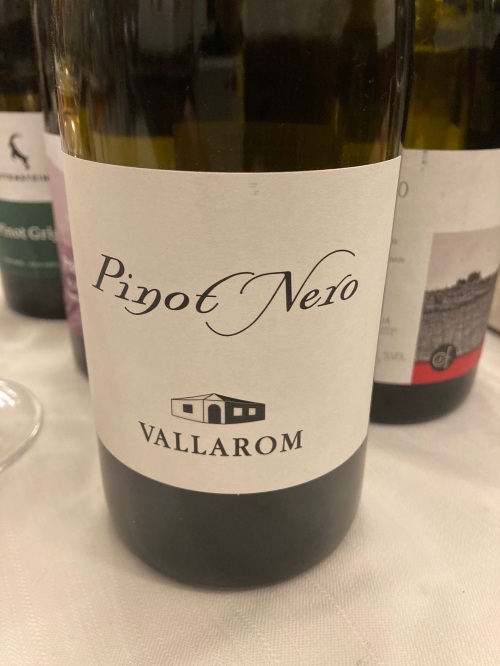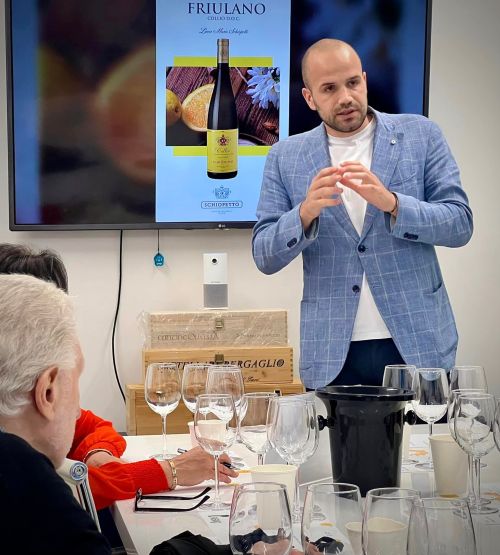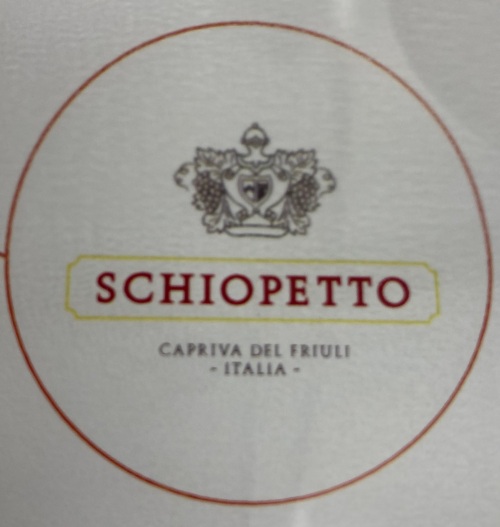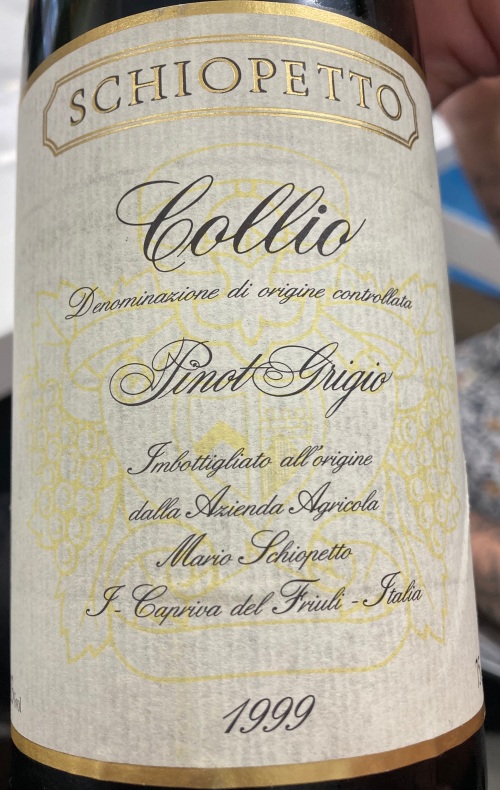Here is the second part of my notes on the tasting I attended featuring the wines of Maison Louis Latour. The theme was Summer in Burgundy and the introduction of the 2022 vintage.
 I spoke to Eléanore Latour, the Vice President about the 2022 vintage in Burgundy. She said both the whites and the reds hold a pleasant freshness as the grapes benefited from the right degree of ripeness. The well structured whites reached the perfect balance between acidity and concentration. The reds reveal fruity and spicy notes with silky tannins and the finish is elegant. The wines are well balanced, fruity, concentrated and will age nicely. The vineyards held up remarkably well against the summer heat, which contributed to the juiciness of the grapes without drying them. This vintage will be remembered as one of the best.
I spoke to Eléanore Latour, the Vice President about the 2022 vintage in Burgundy. She said both the whites and the reds hold a pleasant freshness as the grapes benefited from the right degree of ripeness. The well structured whites reached the perfect balance between acidity and concentration. The reds reveal fruity and spicy notes with silky tannins and the finish is elegant. The wines are well balanced, fruity, concentrated and will age nicely. The vineyards held up remarkably well against the summer heat, which contributed to the juiciness of the grapes without drying them. This vintage will be remembered as one of the best.
 I also spoke with Florent Latour the CEO of Maison Louis Latour about the wines and Burgundy in general.
I also spoke with Florent Latour the CEO of Maison Louis Latour about the wines and Burgundy in general.
 On average the vines are 35 years old and 2% of the vines are renewed every year. They safeguard traditional practices such as the use of horses for ploughing. No insecticides, weed killer, or chemical fertilizer are used.
On average the vines are 35 years old and 2% of the vines are renewed every year. They safeguard traditional practices such as the use of horses for ploughing. No insecticides, weed killer, or chemical fertilizer are used.
The result of a long history, Burgundy and its wines are known worldwide. Pinot Noir is a native grape variety of the area. Bourgogne Pinot Noir is the regional appellation whose wines can come from any part of Burgundy.Last week, I wrote about the white wines of Maison Louis Latour. Here is my my impression of the reds. All of the red wines are 100% Pinot Noir.
 Bourgogne Pinot Noir 2022 Region Bourgogne. This wine exhibits the characteristics of the great Burgundy reds. The average age of the vines is 25 years and the soil is clay and limestone. Grapes are hand picked. Traditional fermentation in open vats. Aging is for 10 to 12 months in stainless steel vats. The wine has hints of cherry, spice, licorice and red currants. The wine should be drunk within 5 years but could last longer. $25
Bourgogne Pinot Noir 2022 Region Bourgogne. This wine exhibits the characteristics of the great Burgundy reds. The average age of the vines is 25 years and the soil is clay and limestone. Grapes are hand picked. Traditional fermentation in open vats. Aging is for 10 to 12 months in stainless steel vats. The wine has hints of cherry, spice, licorice and red currants. The wine should be drunk within 5 years but could last longer. $25
Region: Côte Beaune
 Marsannay 2020. Marsannay is the village which marks the northern gateway to the Côte d’Or when leaving Dijon, the capital of Burgundy, and home to the Ducs de Bourgogne. This village marks the beginning of the Route des Grands Crus which follows the N6 highway through the Côte d’Or. Wines from Marsannay are generally lively and robust; characteristics that come from the rich iron soil. Marsannay received its Appellation Contrôlée in 1987 in recognition of its consistently high quality wine. The average age of the vines is 10 years and the soil is clay and limestone. Grapes are hand picked. Traditional fermentation in open vats with complete malolactic fermentation. Aging is in stainless steel vats for 10 to 12 months. The wine has hints of blueberries, cherries, strawberries and a touch of spice. This wine is approachable now and I liked it as soon as I tasted it. However it will get even better in a few more years. $42
Marsannay 2020. Marsannay is the village which marks the northern gateway to the Côte d’Or when leaving Dijon, the capital of Burgundy, and home to the Ducs de Bourgogne. This village marks the beginning of the Route des Grands Crus which follows the N6 highway through the Côte d’Or. Wines from Marsannay are generally lively and robust; characteristics that come from the rich iron soil. Marsannay received its Appellation Contrôlée in 1987 in recognition of its consistently high quality wine. The average age of the vines is 10 years and the soil is clay and limestone. Grapes are hand picked. Traditional fermentation in open vats with complete malolactic fermentation. Aging is in stainless steel vats for 10 to 12 months. The wine has hints of blueberries, cherries, strawberries and a touch of spice. This wine is approachable now and I liked it as soon as I tasted it. However it will get even better in a few more years. $42
 Aloxe-Corton 1er Cru Domaine Latour 2021. Aloxe-Corton has been the home of the Latour family and the heart of Domaine Louis Latour for centuries. The village of Aloxe-Corton is located in the north of Côte de Beaune on a stony hillside at the foot of the hill of Corton. The name of the climat Corton was added to the village name Aloxe in 1862. The vineyards of Domaine Louis Latour surround this famous village and yield a classic Aloxe-Corton. The average age of the vines is 30 years and the soil is limestone, alluvial sand and gravel. The grapes are hand harvested. Traditional fermentation takes place in open vats. Aging is in oak barrels 15% new for 10 to 12 months. Louis Latour cooperage, French oak, medium toasted. The wine has hints of cherry, cassis, licorice, spice and a touch of blueberries. $75. It will last but it is drinking very well right now.
Aloxe-Corton 1er Cru Domaine Latour 2021. Aloxe-Corton has been the home of the Latour family and the heart of Domaine Louis Latour for centuries. The village of Aloxe-Corton is located in the north of Côte de Beaune on a stony hillside at the foot of the hill of Corton. The name of the climat Corton was added to the village name Aloxe in 1862. The vineyards of Domaine Louis Latour surround this famous village and yield a classic Aloxe-Corton. The average age of the vines is 30 years and the soil is limestone, alluvial sand and gravel. The grapes are hand harvested. Traditional fermentation takes place in open vats. Aging is in oak barrels 15% new for 10 to 12 months. Louis Latour cooperage, French oak, medium toasted. The wine has hints of cherry, cassis, licorice, spice and a touch of blueberries. $75. It will last but it is drinking very well right now.
 Beaune 1er Cru “Vignes Franches” 2020. Historically the owners of this area did not have to pay tax on the land, hence the name “Vignes Franches” meaning free vines. The Beaune Premier Cru “Vignes Franches” parcel, an important part of Domaine Louis Latour, is found mid-slope. The clay soils are scattered with small pebbles which allows for easy drainage of water. It has the same opulence as in neighboring Pommard, as well as an extremely pleasant fruit-forwardness even when young. It is one of the best Premier Cru vineyards of Beaune, producing a wine that is capable of aging to perfection for a considerable period of time. Average age of the vines is 35 years and the soil is clay and limestone. Fermentation in traditional open vats with complete malolactic fermentation. Aging in oak barrels 25% new. Louis Latour cooperage, French oak, medium toast. The wine has hints of black cherry, rhubarb, currants, with a touch of rosemary and a note of violets. This is a structured wine that will age.
Beaune 1er Cru “Vignes Franches” 2020. Historically the owners of this area did not have to pay tax on the land, hence the name “Vignes Franches” meaning free vines. The Beaune Premier Cru “Vignes Franches” parcel, an important part of Domaine Louis Latour, is found mid-slope. The clay soils are scattered with small pebbles which allows for easy drainage of water. It has the same opulence as in neighboring Pommard, as well as an extremely pleasant fruit-forwardness even when young. It is one of the best Premier Cru vineyards of Beaune, producing a wine that is capable of aging to perfection for a considerable period of time. Average age of the vines is 35 years and the soil is clay and limestone. Fermentation in traditional open vats with complete malolactic fermentation. Aging in oak barrels 25% new. Louis Latour cooperage, French oak, medium toast. The wine has hints of black cherry, rhubarb, currants, with a touch of rosemary and a note of violets. This is a structured wine that will age.
 Pommard 1er Cru “Epnots” 2018. The village of Pommard is comfortably sandwiched between the town of Beaune and the village of Volnay. In contrast to the wines of its close neighbors, those of Pommard tend to be fuller, more tannic and expansive in the mouth, similar to those of the Côte de Nuits. This area was named “Epenots”, coming from “épine” (thorn or prickle), as a result of the natural vegetation of the area which was bush-like and thorny. The “Epenots” is solid and firm in its youth and needs time to mature and mellow out before revealing its full glory. The average age of the wines is 30 years and the soil is clay and limestone. Traditional fermentation in open tanks. Aging in oak barrels, 35% new for 10 to 12 months. Louis Latour cooperage, French oak, medium toast. The wine has hints of blackberry, plum, cherry, coffee, spice. This is a very impressive wine and will age for 10 years and more. $142
Pommard 1er Cru “Epnots” 2018. The village of Pommard is comfortably sandwiched between the town of Beaune and the village of Volnay. In contrast to the wines of its close neighbors, those of Pommard tend to be fuller, more tannic and expansive in the mouth, similar to those of the Côte de Nuits. This area was named “Epenots”, coming from “épine” (thorn or prickle), as a result of the natural vegetation of the area which was bush-like and thorny. The “Epenots” is solid and firm in its youth and needs time to mature and mellow out before revealing its full glory. The average age of the wines is 30 years and the soil is clay and limestone. Traditional fermentation in open tanks. Aging in oak barrels, 35% new for 10 to 12 months. Louis Latour cooperage, French oak, medium toast. The wine has hints of blackberry, plum, cherry, coffee, spice. This is a very impressive wine and will age for 10 years and more. $142
 Château Corton Gracey Grand Cru 2019. “Grancey” was the name of the last owners of the chateau situated on the road of Corton, before the Latour family bought it in 1891. This wine is unique and exclusive. It is a blend of five areas of Domaine Latour Corton Grand Cru: Bressandes, Perrières, Grèves, Clos du Roi and Chaumes, the proportions of which vary depending on the vintage. The average age of the vines is over 40 years. After aging individually, only the best barrels are assembled to create the Château Corton Grancey. It is a wine that is produced only if the grapes are of a perfect maturity. Vintages judged inferior are systematically declassified. The average age of the vines is 40 years and the soil is marl and limestone. Hand harvested. Traditional fermentation in open vats. Aging in oak barrels 35 %new for 10 t0 12 months. Louis Latour cooperage, French oak, medium toast. The wine has hints of cherry, strawberry red currants, subtly spiced with a touch of jasmine. The wine will age for another 10 to 15 years or more. It is an outstanding red Burgundy and I am very happy I was able to taste it. $190
Château Corton Gracey Grand Cru 2019. “Grancey” was the name of the last owners of the chateau situated on the road of Corton, before the Latour family bought it in 1891. This wine is unique and exclusive. It is a blend of five areas of Domaine Latour Corton Grand Cru: Bressandes, Perrières, Grèves, Clos du Roi and Chaumes, the proportions of which vary depending on the vintage. The average age of the vines is over 40 years. After aging individually, only the best barrels are assembled to create the Château Corton Grancey. It is a wine that is produced only if the grapes are of a perfect maturity. Vintages judged inferior are systematically declassified. The average age of the vines is 40 years and the soil is marl and limestone. Hand harvested. Traditional fermentation in open vats. Aging in oak barrels 35 %new for 10 t0 12 months. Louis Latour cooperage, French oak, medium toast. The wine has hints of cherry, strawberry red currants, subtly spiced with a touch of jasmine. The wine will age for another 10 to 15 years or more. It is an outstanding red Burgundy and I am very happy I was able to taste it. $190
Note: In 1997, Maison Louis Latour celebrated its bicentennial and was admitted to the Henokiens Club, select circle of companies that have remained in founding family ownership for at least 200 years and still bear the name of their founder.









